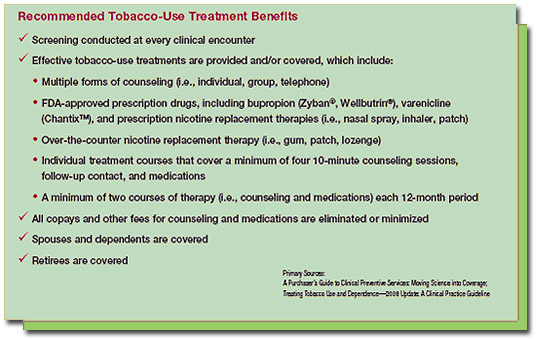Health Benefit Design
Tobacco dependence treatment benefits that have been found most effective address the following:
Pay for counseling and medications.
- Offer the FDA-approved medications, including both prescription and over-the-counter.
- Cover counseling services, including telephone (Quit Line) and individual counseling.
- While classes can also be effective, typically few tobacco users attend them.
- Offer the Free online quit plan offered through the NY State Smokers' Quitline.
Show your employees you want to help them quit tobacco by designing a benefit that makes it easier for them.

- Eliminate co-payments or require employees to pay no more than the standard co-payment. Data show that tobacco users rarely use cessation services inappropriately, and are much more likely to quit when no co-payment is required. Utilization rates average three to eight percent of tobacco users per year.
- Provide at least two 6-week courses of treatment - both medication and counseling - per year. Tobacco dependence is a chronic disease. Relapse is part of the process.
- Provide incentives: Most people know what lifestyle changes they should make, but lack the motivation to do so. Incentive programs attempt to build that motivation by offering individuals external rewards for taking steps in the right direction. Incentives range from recognition in the employee newsletter to a certificate of achievement to a small monetary bonus for quitting smoking. They can also include contributions to a "health promotion medical savings account," merchandise awards(e.g., cups, t-shirts, etc.), extra time off from work, or travel awards. Above all, know your audience; an incentive that will appeal to a truck driver may not appeal to an office worker.